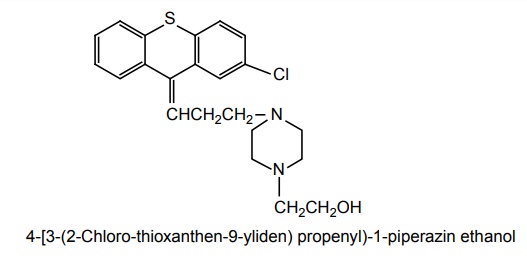Thioxanthines
| Home | | Medicinal Chemistry |Chapter: Medicinal Chemistry : Tranquillizers
Tranquillizers - Thioxanthines - SYNTHESIS AND DRUG PROFILE : Structure, Properties, uses, Synthesis, Assay, Storage, Dosage forms, Dose | Synthesis and Drug Profile
SYNTHESIS AND DRUG PROFILE Thioxanthines Properties and uses: It is a white or almost white crystalline powder, slightly soluble in methylene chloride, and soluble in water and alcohol. It is used in the treatment of acute and chronic schizophrenia, psychotic and other conditions in which anxiety, agitation, and tension predominate. Metabolism: Thioxanthines are closely related to the phenothiazine in their pharmacologic effects and there seems to be at least one major difference in metabolism, most of the thioxanthine do not form ring hydroxylated derivatives. Assay: Dissolve the substance in a mixture of 0.01 M hydrochloric acid and alcohol. Perform potentiometric titration, using 0.1 M sodium hydroxide. Synthesis Storage: It should be stored in well-closed airtight container and protected from light. Synthesis Uses: It is used in the treatment of schizophrenia and other psychotic states. Synthesis Properties and uses: White, or nearly white crystalline powder with slight odour, and affected by light, soluble in water, anhydrous alcohol, or chloroform, practically insoluble in benzene, acetone, or ether. The substituent in the second position produces Z and E isomers. The Z isomers are the more active antipsychotic isomers. It was introduced as an antipsychotic agent useful in the management of schizophrenia and other psychotic states. It is also helpful in the management of secondary symptoms of schizophrenia, such as hallucinations, tension, and suspiciousness. It also shows antidepressant property.a. Chlorprothixene


b. Clopenthixol


c. Thiothixene


